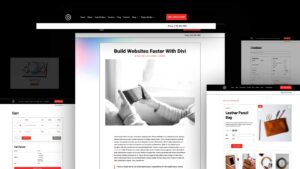
The post-Covid ecommerce hangover has hit Roman Khan. He launched his first direct-to-consumer brand in 2013, acquired others, and in 2021 founded Peak 21, an aggregator with equity investors. The outlook was good.
Fast forward to 2024, and many ecommerce companies are struggling. Mergers and acquisitions have cratered. Yet Khan perseveres. His team reviews dozens of purchase candidates every month, albeit cautiously.
In our recent conversation, Khan shared his investment criteria, current market conditions, and predictions for a recovery. The entire audio is embedded below. The transcript is edited for clarity and length.
Eric Bandholz: Give us a rundown of what you do.
Roman Khan: I’m the founder and president of an ecommerce holding company called Peak 21. We buy, grow, and sell direct-to-consumer brands. My DTC experience began in 2013 when my wife, Jennifer, and I started Linjer. We sold leather bags but now it’s mostly jewelry. We launched it on Indiegogo.
By 2016, we were doing a couple of million in annual revenue — big enough for Jennifer and me to quit our jobs to work on it full-time. In 2017, Linjer produced $1 million in EBITDA — earnings before interest, taxes, depreciation, and amortization. By then we had raised quite a bit of money on Kickstarter and Indiegogo and built up street cred. Folks were reaching out, asking us how we did it. We decided to diversify. We needed more brands, and Meta ads were working well.
I took that $1 million of cash, our street cred, and combined sweat equity with cash to invest in three other DTC companies. Each was doing less than $1 million in revenue annually. By 2019, we were doing $50 million in sales as a group.
When Covid hit in 2020, revenue ballooned to $100 million annually. In 2021, investors were knocking on our door, particularly Jeffrey Yan, whose family owned Forbes Media up until this year. He came to my office and said I needed to take on external capital to buy more prominent companies.
We set up a blank check company called Peak 21. Jeffrey Yan and others invested eight figures in equity. We’re now using it to buy businesses. We seek brands doing $5 to $50 million in annual sales.
Bandholz: What’s an ideal acquisition candidate?
Khan: The pool is shrinking. I’ve spoken with many owners. My acquisitions team talks to 100-plus businesses every month. Only about 10% have a product-market fit that can grow with low budgets. Our main criterion now is size. We look at the fundamentals. What’s the customer acquisition cost? And the repeat buyer rate? The best scenario is 70% of first-time buyers repeat in the first quarter. We know the investment will likely work out at the rate.
Two, we look at customers’ buying habits. For instance, we own a company called Nutrition Kitchen. It’s a daily meal delivery service. Daily rather than weekly or monthly habits play a significant role.
Beyond consumables, we look at contribution margins on three levels.
First, we calculate revenue (net of taxes and coupon-driven sales) and shipping fees collected at checkout. That leaves us with “profit contribution one” — PC1.
Then, we deduct roughly 10 variable costs, such as warehouse storage, pick-and-pack, shipping fees, returns, and exchanges. That results in profit contribution two — PC2.
Lastly, we deduct marketing to determine PC3.
From PC3 we subtract operating expenses to arrive at EBITDA.
A key acquisition metric is a 50% or higher PC2 while maintaining a competitive suggested retail price.
Bandholz: A hundred candidates a month is a lot to review.
Khan: Many ecommerce companies are struggling now. Revenue and EBITDA are down. Out of our six main brands, two are struggling massively. Overall we’re okay. We’re growing with a diversified portfolio. But those two are a nightmare. We have lent over $1 million to each one in the last 24 months. So it’s been hard. Many founders are holding out until 2025 or 2026 to sell.
We buy companies in four ways. One is cash. Two is seller financing. Three is using debt, where we borrow the money against the acquired company’s value. That avenue, I should add, is very challenging now. The fourth method is an equity swap wherein we acquire a company with Peak 21 stock. Cash is scarce right now. Our willingness to pay a lot of cash upfront is low to non-existent. We’re often the only real buyers when talking to a company.
For the market to improve, two things need to happen. First, investors must get over the losses from aggregators, such as Perch, Thrasio, and others. Second, interest rates have to come down. Once that happens, liquidity will loosen up, and hopefully, the market will return, likely by Q1 2026 in my estimation.
Bandholz: How can listeners contact you?
Khan: Our site is Peak21.io. They can message me on X or on LinkedIn.




